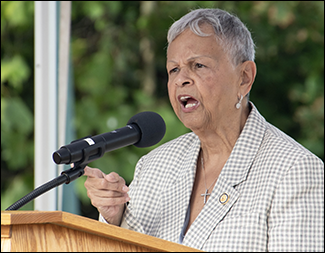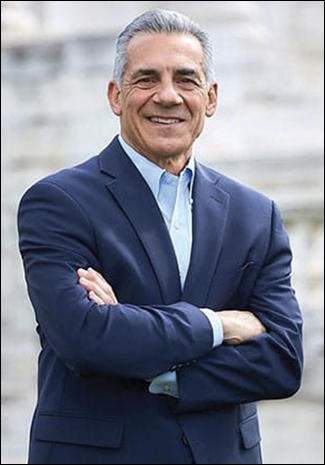by Jim Ellis — Thursday, Dec. 4, 2025
Special Elections
With the TN-7 special election now complete, three more contests are pegged for the first quarter of next year. The upcoming special elections will be held in Georgia, New Jersey, and Texas.
TN-7
This week’s Tennessee result saw the 7th District electorate performing as the voting history projected, thus quelling the Democrats’ quest for the upset that certain polls suggested was possible. The 54-44 percent result from what will likely be a touch over 180,000 votes cast when all ballots are counted – a large number for a special congressional election – was equivalent to the Dave’s Redistricting App’s partisan lean calculation of 55.1R – 42.2D.
Most importantly, from the Republicans’ perspective, the party apparatus proved in this instance, that they could turn out the base vote and a sizable number of the casual Trump voters, meaning those who typically only vote when the President is on the ballot. Repeatedly doing so in future elections will be a critical factor in determining whether the party will have success in the regular midterm elections next year.
GA-14

Georgia Rep. Marjorie Taylor Greene (R-Rome) / Photo by Gage Skidmore
It is believed that Gov. Kemp will calendar the jungle primary for a date in March. Under Georgia special election law, all candidates are on the initial ballot with the top two finishers, irrespective of party affiliation, advancing to the runoff election in the likely event that no contender attracts majority support. To comply with state law, the secondary vote must occur within 28 days of the initial election. Therefore, it is probable that this seat will be filled before the end of April.
A total of 13 Republicans and two Democrats have already announced their candidacies, but the two most talked-about potential candidates, state Senate Majority Leader Jason Anavitarte (R-Doraville) and state Sen. Colton Moore (R-Trenton), have yet to formally declare.
It is probable that two Republicans will advance into the special runoff election. Republicans will hold this seat.
NJ-11
Gov.-Elect Mikie Sherrill (D) has resigned her congressional seat, thus leading to Gov. Phil Murphy (D) scheduling a Feb. 5 partisan primary and an April 16 special general election.
Candidate filing has closed, and 13 Democrats will be on the Feb. 5 ballot vying for the party nomination. Within the large group is former 7th District Congressman Tom Malinowski, ex-Lt. Gov. Tahesha Way, and five local officials, with the remainder coming from the private sector or political activist class. Only one Republican filed, Randolph Township Mayor Joe Hathaway, so he is guaranteed to win the party nomination, meaning a ballot slot for the special general election.
The partisan lean (Dave’s Redistricting App calculations) for this district, which redistricting has made much more Democratic in the previous two decades, is 55.6D – 42.5R. Therefore, it is clear the eventual Democratic nominee will have the inside track toward winning the special election and holding the seat for the party.
TX-18
The longest special election cycle to fill a congressional vacancy will culminate with a Jan. 31 runoff contest between Harris County Attorney Christian Menefee (D) and former Houston City Councilwoman Amanda Edwards (D). Since this is a double Democratic runoff, there is no doubt that the party will hold the seat for the duration of the current Congress.
Regardless of whether Menefee or Edwards wins the Jan. 31 vote, they will immediately find themselves embroiled in a new campaign against Rep. Al Green (D-Houston). Since it is likely that the new Texas congressional map will be in effect for the 2026 midterm elections, the Houston area sees a major reconfiguration of its congressional districts.
The new plan collapsed most of Rep. Green’s 9th CD into a new 18th District, with much of the current 18th going into Rep. Sylvia Garcia’s (D-Houston) new 29th CD. The regular cycle Texas primary is scheduled for March 3, so the eventual runoff winner and loser will find themselves immediately competing in a new campaign.
The regular term candidate filing deadline is Dec. 8. At this point, neither Menefee nor Edwards have filed for the new term, but both are expected to do so. This means that the loser of the Jan. 31 runoff could conceivably be an active candidate for the March 3 regular primary election, which could force Rep. Green into a runoff with either the new incumbent or the just-defeated runoff participant.
While the special election will end on Jan. 31, the campaign for a full term will already be entering political prime time.






